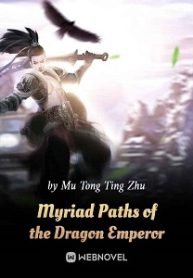Starting from the Planetary Governor - Chapter 147
- Home
- Starting from the Planetary Governor
- Chapter 147 - Chapter 147 Chapter 131 The Battle of Three Ponds 3
Chapter 147: Chapter 131, The Battle of Three Ponds_3
They really couldn’t break through.
Then more soldiers flushed out from the positions built around vehicles and launched a counter-charge in the direction of the two ambushing forces.
The ambushing forces on both sides of the road, each numbering about two hundred men, were actually overrun by this assault.
However, these soldiers did not pursue too aggressively.
After all, a gunfight between infantry in the open field still results in a certain level of casualties.
There was simply no need for it.
They retreated to their positions, allowing those looters who had started to fall back to come forward again.
This was exactly what they hoped for.
In battle, the efficiency of killing with guns is just too low.
In fact, at the very start of the combat, they had already sent word to the rear.
Upon receiving the message, the driver of the artillery support company, parked quite a distance away at the main camp, floored the accelerator. In less than half an hour, they had covered almost twenty kilometers.
This was a somewhat risky decision; moving the artillery battalion forward without protection was hazardous. The only defense they had was a few dozen soldiers from the guard, engineering, and logistics units, riding “Scout Rider Motorcycles” for protection.
But obviously, the looters who had never encountered heavy artillery didn’t take that into account.
The artillery support company, having advanced twenty kilometers, halted the Iron Bulls acting as tow trucks and quickly set up the towed howitzers.
Using the coordinates relayed from the front-line infantry, they adjusted their firing parameters. Then, the ten gods of war before them began to roar.
The 155mm howitzers they deployed had a range that could reach nearly 25 kilometers.
And there, that was exactly where the two motorized infantry companies at the front were engaging in combat.
After entangling in battle with the ambushers in the front and on both sides for nearly an hour, they finally received support from friendly artillery.
Twelve heavy artillery shells fell about two to three hundred meters outside their positions, covering a half circle.
The looters were dumbfounded by the explosion.
The fifty-kilogram shells, standing half the height of a person, blasted craters two meters deep upon impact, with a lethal range nearly the size of a soccer field.
Those near the blast center were obliterated; those a bit further away suffered from shattered organs due to the shockwave or were wounded by shrapnel…
Without defensive fortifications or cover, this round of artillery fire resulted in extremely heavy losses for the ambushing looters.
Besides the loss of personnel, an even heavier blow was to their morale.
In the hour of combat preceding, they exerted themselves only to fail in vanquishing this group of soldiers, less than half their number, and even suffered a few countercharges, losing men.
With all the advantages on their side—being prepared against the unprepared, resting against the weary, using terrain for ambush, outnumbering the enemy—they still ended up in a deadlock.
This had already disheartened them.
And with a round of heavy artillery pounding down, it further shattered their already low morale.
The number of men killed in the hour-long fierce battle was probably fewer than those killed by this round of artillery fire!
Immediately, looters whose morale had entirely collapsed began to flee; and the few who obeyed their leaders’ orders to stay were soon met with a second round of artillery fire.
After the deafening barrage of heavy artillery, not a single survivor dared continue the battle.
What was the point of fighting if they couldn’t win and just took bombs on the outskirts?
But now, escaping was not so easy.
Within the motorized infantry companies, there were indeed motorcycles.
The “Scouts” that had been pulled back inside the positions raced out with a sputtering sound. Two men per vehicle, one driving, the other operating the machine gun mounted in the sidecar, began the pursuit. A large force of infantry followed closely, accompanied by the blare of the charge horn.
How could the fleeing looters outrun the “Scouts” with their superior off-road capability? Many were mowed down by the light machine guns on the motorcycles, and any attempt to stop and retaliate was met with a brief engagement from the “Scouts.” The following infantry would instantly greet them with rocket launchers, then a dense shower of gunfire.
The looters involved in this ambush and blocking battle suffered extremely heavy casualties, and less than one in ten managed to escape the battlefield.
…
Two battles, two reports—the information reaching Perbov’s hands still served as a wake-up call.
There was no doubt it was a great victory. In the two battlefields, at least two thousand enemies were defeated; the number of dead and wounded was countless, with no time to tally, but certainly exceeding a thousand.
Meanwhile, the two mechanized infantry companies had suffered fewer than double-digit casualties; the two motorized infantry companies fared slightly worse, with a combined total of about thirty casualties.
With a casualty ratio of 1:50, what was there not to be satisfied with?
Still, there were concerns.
Perbov was summarizing the lessons learned.
For instance, he should not have allowed the motorized infantry companies to advance too far ahead, leading to artillery support not being available until an hour into the battle. If that timeframe could be moved up by half an hour, the casualties of the motorized infantry could perhaps be further reduced.
Moreover, considering he had spread his forces quite thin, he also needed to consider how the main force of looters from Sanchi Town would act next. After all, he was still unclear about the exact number of enemies, their arms and equipment, especially regarding heavy weapons.














